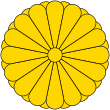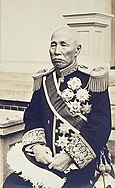
The politics of Japan are conducted in a framework of a multi-party bicameral parliamentary representative democratic constitutional monarchy whereby the Emperor is the ceremonial head of state and the Prime Minister is the head of government and the head of the Cabinet, which directs the executive branch.
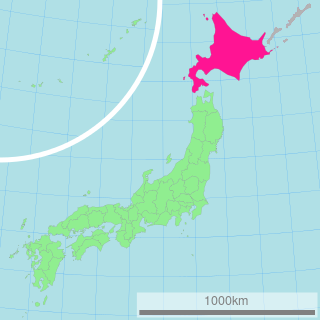
Hokkaido, formerly known as Ezo, Yezo, Yeso, or Yesso, is the second largest island of Japan, and the largest and northernmost prefecture. The Tsugaru Strait separates Hokkaido from Honshu. The two islands are connected by the undersea railway Seikan Tunnel. The largest city on Hokkaido is its capital, Sapporo, which is also its only ordinance-designated city. About 43 km north of Hokkaido lies Sakhalin Island, Russia. To its east and north-east are the disputed Kuril Islands.

The National Diet is Japan's bicameral legislature. It is composed of a lower house called the House of Representatives, and an upper house, called the House of Councillors. Both houses of the Diet are directly elected under parallel voting systems. In addition to passing laws, the Diet is formally responsible for selecting the Prime Minister. The Diet was first convened as the Imperial Diet in 1889 as a result of adopting the Meiji Constitution. The Diet took its current form in 1947 upon the adoption of the post-war constitution, which considers it the highest organ of state power. The National Diet Building is in Nagatachō, Chiyoda, Tokyo.
Komeito, formerly called New Komeito, is a political party in Japan founded by members of the Nichiren Buddhist-based new religious movement Soka Gakkai. The party is sometimes called by its former name, Clean Government Party.

The Liberal Democratic Party of Japan, frequently abbreviated to LDP or Jimintō (自民党), is a conservative political party in Japan.

The Heisei period is the current era of Japan. The Heisei period started on 8 January 1989, the day after the death of the Emperor Hirohito, when his son, Akihito, acceded to the throne as the 125th Emperor. In accordance with Japanese customs, Hirohito was posthumously renamed "Emperor Shōwa" on 31 January 1989.

The House of Representatives is the lower house of the National Diet of Japan. The House of Councillors is the upper house.

The House of Councillors is the upper house of the National Diet of Japan. The House of Representatives is the lower house. The House of Councillors is the successor to the pre-war House of Peers. If the two houses disagree on matters of the budget, treaties, or designation of the prime minister, the House of Representatives can insist on its decision. In other decisions, the House of Representatives can override a vote of the House of Councillors only by a two-thirds majority of members present.

The Democratic Party of Japan was a centrist political party in Japan from 1998 to 2016.
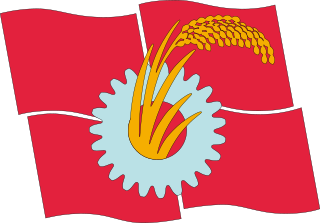
The Japanese Communist Party is a political party in Japan and is one of the largest non-governing communist parties in the world.

The Social Democratic Party, also known as the Social Democratic Party of Japan and previously as the Japan Socialist Party, is a political party that at various times advocated the establishment of a socialist Japan until 1996. Since its reformation and name change in 1996, it has defined itself as a social-democratic party.
The Japanese political process has three types of elections: general elections to the House of Representatives held every four years, elections to the House of Councillors held every three years to choose one-half of its members, and local elections held every four years for offices in prefectures, cities, and villages. Elections are supervised by election committees at each administrative level under the general direction of the Central Election Administration Committee, an attached organization to the Ministry of Internal Affairs and Communications (MIC). The minimum voting age in Japan's non-compulsory electoral system was reduced from twenty to eighteen years in June 2016. Voters must satisfy a three-month residency requirement before being allowed to cast a ballot.

Shinzō Abe is a Japanese politician serving as Prime Minister of Japan and Leader of the Liberal Democratic Party (LDP) since 2012. He previously served as Prime Minister from 2006 to 2007 and Chief Cabinet Secretary from 2005 to 2006. In 2019, Abe succeeded Shigeru Yoshida as the second-longest serving Prime Minister in post-war Japan and the fourth-longest serving PM in Japanese history.
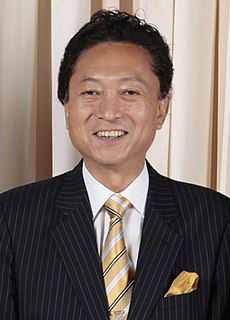
A general election for the Japanese House of Representatives was held on August 30, 2009. The opposition Democratic Party (DPJ) defeated the ruling coalition in a sweeping victory, winning 221 of the 300 electoral districts and receiving 42.4% of the proportional block votes for another 87 seats, a total of 308 seats to only 119 for the LDP.

A general election was held in Japan on 16 December 2012. Voters gave the Liberal Democratic Party a landslide victory, ejecting the Democratic Party from power after three years. It was the fourth worst defeat suffered by a ruling party in Japanese history.

The 23rd Elections to the House of Councillors for the upper house of the National Diet, the legislature of Japan, was held on July 21, 2013. In the last election in 2010, the Democratic Party of Japan (DPJ) remained the largest party, but the DPJ-led ruling coalition lost its majority. The House of Councillors is elected by halves to six year terms. In 2013, the class of Councillors elected in 2007 was up.

The 47th general election of members of the House of Representatives of Japan was held on 14 December 2014. Voting took place in all Representatives constituencies of Japan including proportional blocks, in order to appoint Members of Diet to seats in the House of Representatives, the lower house of the National Diet of Japan. As the cabinet resigns in the first post-election Diet session after a general House of Representatives election, the lower house election also led to a new designation election of the prime minister in the Diet, and the appointment of a new cabinet. The turnout in this election is the lowest in Japanese history.
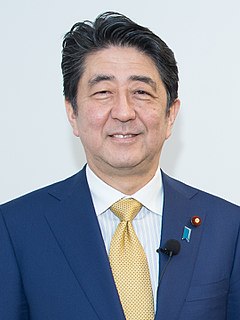
The 48th general election of members of the House of Representatives took place on 22 October 2017. Voting took place in all Representatives constituencies of Japan – 289 single-member districts and eleven proportional blocks – in order to appoint all 465 members of the House of Representatives, the lower house of the then 707-member bicameral National Diet of Japan. Incumbent Prime Minister Shinzō Abe's governing coalition of the Liberal Democratic Party (LDP) and Komeito retained their seats in light of what was perceived as weak opposition, winning his fourth term in office and holding on to the two-thirds supermajority in order to revise the war-renouncing Article 9 of the Japanese Constitution.

The Constitutional Democratic Party of Japan, frequently abbreviated to CDP, Rikkentō (立憲党), Ritsumintō (立民党) or Minshutō (民主党), is a centre-left political party in Japan. The party is led by Yukio Edano.
This local electoral calendar for 2019 lists the subnational elections to be held in 2019 in the de jure and de facto sovereign states. By-elections and sub-national referendums are also included.
